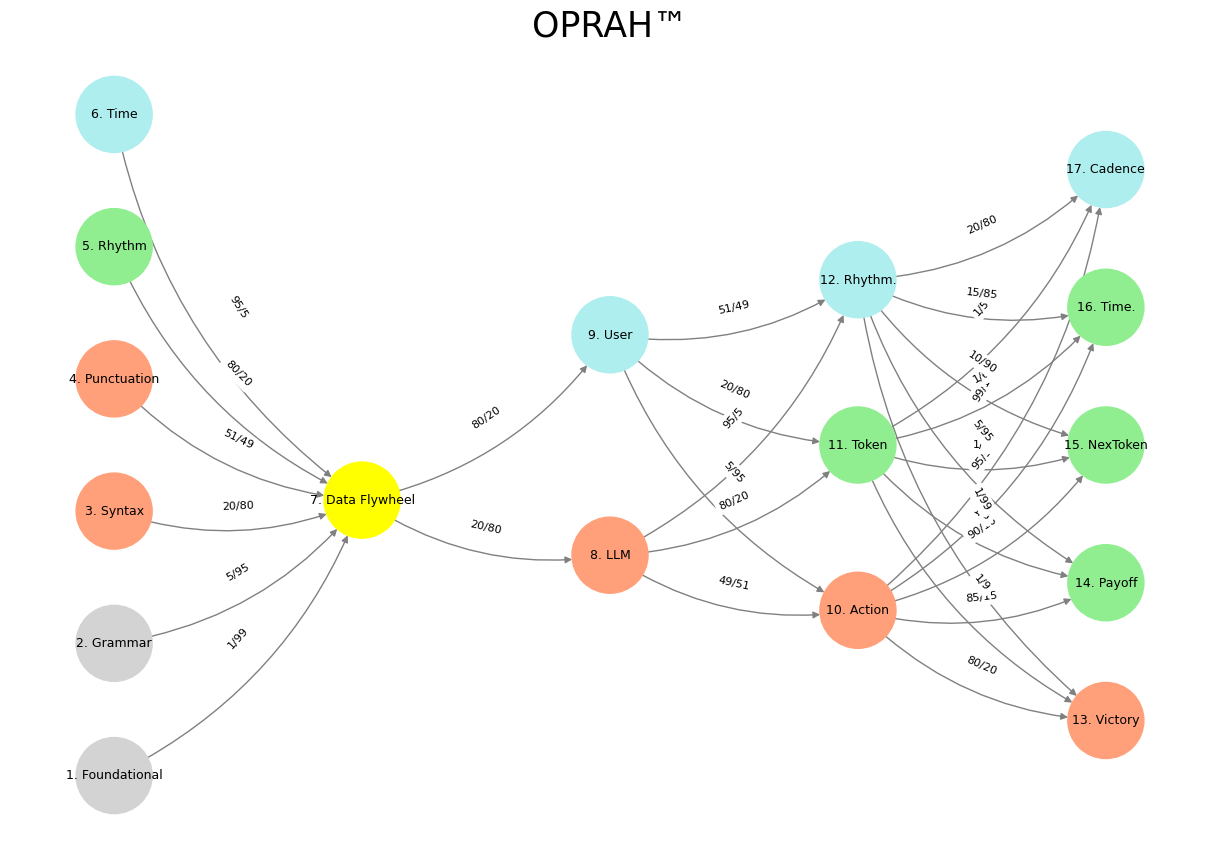Resilience 🗡️❤️💰#
The Strategic Bequest Motive: A Multiscalar Game Through Murdoch’s Lens and James’ Jacob
Here’s Take 2, reframing the strategic bequest motive from Bernheim, Shleifer, and Summers’ paper as a multiscalar game across your five levels—Ignorance, Bequest, Strategy, Knowledge, and Certainty—using your game metaphors (🪙🎲🎰, ♥️♦️♣️, 🏇🏎️, 🤺♟️👑, 🥅🎯). I’ll weave in your neural network’s yellow node as the Bequest thread, tie it to the Murdoch family drama (including the September 2024 lawsuit and James Murdoch’s February 24, 2025, article), and explore James’ christening as “Jacob” for added depth. This is .md-formatted for your .ipynb, ready to vibe with your visualization code.

Fig. 11 Influencer (Witness) vs. Indicator (Trial). These reflects sentiments in 2 Chronicles 17:9-12: For the eyes of the Lord run to and fro throughout the whole earth, to show Himself strong (Nowamaani) on behalf of them whose heart is perfect toward Him. This parallels Shakespeare’s image of the poet’s eye “in a fine frenzy rolling,” scanning from heaven to earth and back. Ukubona beyond the mundane (network layers 3-5), upstream to first prinicples of the ecosystem (layer 1). This is the duty of intelligence and what our App and its variants in and beyond clinical medicine aims for – to elevate perception, agency, and games for all. To leave a shrinking marketplace for the serpent in Eden, for snakeoil salesmen, for fraudstars. To shrink the number of the gullible.#
Ignorance 🪙 🎲 🎰: The Coin Flip of Raw Chance#
Imagine a world where nothing you do matters—a coin flip (🪙), dice roll (🎲), or roulette spin (🎰). This is Ignorance, the paper’s starting point: pure randomness, no leverage, no strategy. Bequests here are just wealth dropped into a void, like a testator tossing coins into a well—outcomes are fixed, indifferent to intent. The yellow node (Bequest) is a raw input—a will, a trust, a contract—processed into the game but untouched by cunning. The paper sidesteps this chaos, arguing bequests aren’t accidental (contra Davies’ “accidental bequests” model); they’re deliberate, escaping this layer’s futility.
Murdoch Angle: Rupert Murdoch’s early life could’ve been this—a chancy inheritance from his father’s modest Aussie papers. But he didn’t play the roulette wheel of fate. The September 2024 lawsuit shows him rejecting Ignorance—rewriting the trust isn’t a dice roll; it’s a move to control, not succumb to, randomness. X might buzz (hypothetically, February 2025), “Rupert never flipped coins—he stacked the deck,” reflecting his refusal of this layer’s passivity.
Bequest ♥️ ♦️ ♣️: Poker’s Mind Games#
Now we’re in Bequest, the poker table (♥️♦️♣️) where bluffing, perception, and partial knowledge rule. The paper’s core shines here: testators use bequests as cards, conditioning shares on actions (e.g., attention from kids) to sway behavior. It’s not about what’s known but what’s believed—a parent threatens disinheritance, but credibility hinges on having multiple players (two+ kids). The yellow node shifts from raw input to a mask, a deceptive tool wielded with Strategic finesse and Transactional stakes. The paper’s model—parents extracting “surplus” (care, loyalty)—is pure psychological warfare, a bluff only works if the kids buy it.
Murdoch Angle: The Murdoch trust is this game incarnate. Rupert’s 1999 “irrevocable” trust split control among four kids (Lachlan, James, Elisabeth, Prudence), but the September 2024 lawsuit reveals his Bequest play: amending it to favor Lachlan, bluffing the others into submission. James’ February 24, 2025, NYT article—slamming Fox News’ climate denial—calls this bluff, exposing the mask. X might quip, “James folded his hand—Rupert’s dealing from the bottom now,” capturing the Adversarial rift as siblings vie over perception.
Jacob’s Meaning: James Rupert Jacob Murdoch—christened “Jacob” (Hebrew: “supplanter” or “heel-grabber”)—fits this layer eerily. In Genesis, Jacob tricks Esau out of his birthright, mirroring James’ potential to upend Lachlan’s inheritance. His rebellion (resigning from News Corp in 2020, critiquing Rupert in 2025) casts him as the supplanter, using Bequest’s mind games to challenge the family deck.
Strategy 🏇 🏎️: Razor-Thin Triumphs#
Enter Strategy, the horse race (🏇) or F1 duel (🏎️)—victory by a nose, optimization under pressure. The paper’s testator refines the poker bluff into a precise execution: crafting a bequest rule (e.g., “most attentive kid wins”) that balances Adversarial competition and Transactional payoff. With two+ beneficiaries, every move counts—credibility isn’t just belief but a split-second edge. The yellow node becomes an equilibrium, teetering between efficiency (maximizing surplus) and aggression (threatening disinheritance). Unlike Ignorance’s chaos or Bequest’s fog, this is weaponized precision, where Prosody (timing) decides the race.
Murdoch Angle: Rupert’s lawsuit is this razor’s edge—tilting the trust to Lachlan risks alienating James, Elisabeth, and Prudence, but it’s a calculated Strategy to lock in Fox’s conservative Cadence. James’ article counters with his own sprint, aligning with Biden/Harris (2020 donation, 2024 endorsement) to outpace Rupert’s ideological lap. The December 2024 ruling against Rupert (Nevada court rejecting the amendment) shows the race’s fragility—Lachlan’s lead slipped, per the paper’s multi-player logic. X might say, “Rupert’s F1 stalled—James hit the nitrous,” highlighting the Strategic misfire.
Jacob’s Echo: Jacob’s wrestling with the angel (Genesis 32) fits here—a grueling, margin-thin struggle for blessing. James, as “Jacob,” grapples with Rupert’s empire, his 2025 article a Strategic lunge to redefine the finish line, not just inherit it.
Knowledge 🤺 ♟️ 👑: Chessmaster’s Dominion#
Knowledge is chess (♟️), warfare (🤺), or resource mastery (👑)—deterministic, where skill trumps luck. The paper’s econometric evidence lives here: data (e.g., LRHS) shows multi-child families with bequeathable wealth (stocks, homes) get more attention, a predictable outcome of Strategic rules mastered over time. Single-child families? No leverage, no game—proving the two-player minimum. The yellow node is an archive—wealth stats, behavioral patterns—deployed with Motive-driven precision. Unlike Bequest’s bluff or Strategy’s speed, this is Operational certainty: preparation wins.
Murdoch Angle: Rupert’s empire—Fox, News Corp—is a chessboard, built over decades with Knowledge of media and politics (Thatcher, Reagan). The lawsuit aimed to cement this mastery, but James’ article leverages his own archive—years at News Corp, insight into Fox’s “menace” (per The Atlantic, February 2025)—to checkmate Rupert’s plan. The court’s rejection (calling it a “charade”) validates the paper: Knowledge falters without credible threats. X might note, “James played the long game—Rupert’s pawns got pinned.”
Jacob’s Mastery: Jacob’s ladder (Genesis 28)—a vision of structured ascent—mirrors this. James, the “brightest” sibling (per Wikipedia), climbs with calculated moves (Lupa Systems, Bodhi Tree), using Knowledge to outmaneuver Lachlan’s kingly claim.
Certainty 🥅 🎯: Destiny’s Fulfillment#
Finally, Certainty (🥅🎯)—faith, love, destiny—where the game ends, and purpose reigns. The paper hints at this: strategic bequests seek a Victory beyond wealth—a legacy etched in time. The yellow node transforms into inevitability, a Cadence of fulfillment beyond Adversarial play. It’s the testator’s dream of immortality, though the paper warns cosmic indifference looms (no bequest outruns entropy). This is Existential—action fulfills, doesn’t shape, the outcome.
Murdoch Angle: Rupert’s Certainty is Fox’s conservative soul, a media Eden he believes Lachlan will tend. The lawsuit was his prayer to secure this, but James’ 2025 defiance—calling Fox a “menace” (The Atlantic)—shatters it, embracing a divergent destiny (climate focus, liberal lean). The siblings’ post-trial letter (Thanksgiving 2024, per The Guardian) pleads for healing, a faint Certainty of family over empire. X might muse, “Rupert’s heaven crumbled—James chose his own star,” echoing the paper’s limit: Certainty eludes control.
Jacob’s Transcendence: Jacob becomes Israel (Genesis 35)—a name shift to “he who strives with God”—symbolizing Certainty. James, as “Jacob,” strives beyond Rupert’s orbit, his article a manifesto of purpose, not just rebellion, aligning with the paper’s cosmic tension: Victory or void?
Game Layers Recap#
Level |
Description |
Games |
Node Role |
Murdoch Example |
|---|---|---|---|---|
Ignorance |
Pure chance, no leverage |
Coin Toss, Dice, Roulette |
Raw input (trust, wealth) |
Rupert’s early inheritance |
Bequest |
Deception, perception |
Poker, Bluffing |
Mask (trust as leverage) |
2024 lawsuit bluff |
Strategy |
Razor-thin optimization |
Horse Racing, F1 |
Equilibrium (control edge) |
Lachlan vs. James sprint |
Knowledge |
Deterministic mastery |
Chess, Warfare |
Archive (data, empire) |
Empirical sibling dynamics |
Certainty |
Purpose beyond strategy |
Faith, Destiny |
Inevitability (legacy) |
Rupert’s vision vs. James’ rift |
Jacob’s Name: A Final Twist#
“Jacob”—“supplanter” or “he who strives”—threads James through all layers. In Ignorance, he’s born into Rupert’s game; in Bequest, he supplants with defiance; in Strategy, he races to redefine; in Knowledge, he masters his exit; in Certainty, he seeks a new Israel, not Rupert’s. This christening (December 13, 1972, per Wikipedia) isn’t random—it’s a prophetic riff on the paper’s motive: strategic bequests breed Adversarial heirs, and James, the Jacob, embodies the struggle.
This multiscalar lens—amped by Murdoch’s real-time saga—extends the paper’s econometrics into a fractal epic. Does Certainty crown Rupert’s empire, or does James’ Knowledge upend it? The yellow node dances across, a riddle unresolved.
Show code cell source
import numpy as np
import matplotlib.pyplot as plt
import networkx as nx
# Define the neural network layers
def define_layers():
return {
'Suis': ['Foundational', 'Grammar', 'Syntax', 'Punctuation', "Rhythm", 'Time'], # Static
'Voir': ['Data Flywheel'],
'Choisis': ['LLM', 'User'],
'Deviens': ['Action', 'Token', 'Rhythm.'],
"M'èléve": ['Victory', 'Payoff', 'NexToken', 'Time.', 'Cadence']
}
# Assign colors to nodes
def assign_colors():
color_map = {
'yellow': ['Data Flywheel'],
'paleturquoise': ['Time', 'User', 'Rhythm.', 'Cadence'],
'lightgreen': ["Rhythm", 'Token', 'Payoff', 'Time.', 'NexToken'],
'lightsalmon': ['Syntax', 'Punctuation', 'LLM', 'Action', 'Victory'],
}
return {node: color for color, nodes in color_map.items() for node in nodes}
# Define edge weights (hardcoded for editing)
def define_edges():
return {
('Foundational', 'Data Flywheel'): '1/99',
('Grammar', 'Data Flywheel'): '5/95',
('Syntax', 'Data Flywheel'): '20/80',
('Punctuation', 'Data Flywheel'): '51/49',
("Rhythm", 'Data Flywheel'): '80/20',
('Time', 'Data Flywheel'): '95/5',
('Data Flywheel', 'LLM'): '20/80',
('Data Flywheel', 'User'): '80/20',
('LLM', 'Action'): '49/51',
('LLM', 'Token'): '80/20',
('LLM', 'Rhythm.'): '95/5',
('User', 'Action'): '5/95',
('User', 'Token'): '20/80',
('User', 'Rhythm.'): '51/49',
('Action', 'Victory'): '80/20',
('Action', 'Payoff'): '85/15',
('Action', 'NexToken'): '90/10',
('Action', 'Time.'): '95/5',
('Action', 'Cadence'): '99/1',
('Token', 'Victory'): '1/9',
('Token', 'Payoff'): '1/8',
('Token', 'NexToken'): '1/7',
('Token', 'Time.'): '1/6',
('Token', 'Cadence'): '1/5',
('Rhythm.', 'Victory'): '1/99',
('Rhythm.', 'Payoff'): '5/95',
('Rhythm.', 'NexToken'): '10/90',
('Rhythm.', 'Time.'): '15/85',
('Rhythm.', 'Cadence'): '20/80'
}
# Calculate positions for nodes
def calculate_positions(layer, x_offset):
y_positions = np.linspace(-len(layer) / 2, len(layer) / 2, len(layer))
return [(x_offset, y) for y in y_positions]
# Create and visualize the neural network graph
def visualize_nn():
layers = define_layers()
colors = assign_colors()
edges = define_edges()
G = nx.DiGraph()
pos = {}
node_colors = []
# Create mapping from original node names to numbered labels
mapping = {}
counter = 1
for layer in layers.values():
for node in layer:
mapping[node] = f"{counter}. {node}"
counter += 1
# Add nodes with new numbered labels and assign positions
for i, (layer_name, nodes) in enumerate(layers.items()):
positions = calculate_positions(nodes, x_offset=i * 2)
for node, position in zip(nodes, positions):
new_node = mapping[node]
G.add_node(new_node, layer=layer_name)
pos[new_node] = position
node_colors.append(colors.get(node, 'lightgray'))
# Add edges with updated node labels
for (source, target), weight in edges.items():
if source in mapping and target in mapping:
new_source = mapping[source]
new_target = mapping[target]
G.add_edge(new_source, new_target, weight=weight)
# Draw the graph
plt.figure(figsize=(12, 8))
edges_labels = {(u, v): d["weight"] for u, v, d in G.edges(data=True)}
nx.draw(
G, pos, with_labels=True, node_color=node_colors, edge_color='gray',
node_size=3000, font_size=9, connectionstyle="arc3,rad=0.2"
)
nx.draw_networkx_edge_labels(G, pos, edge_labels=edges_labels, font_size=8)
plt.title("OPRAH™", fontsize=25)
plt.show()
# Run the visualization
visualize_nn()


Fig. 12 Resources, Needs, Costs, Means, Ends. This is an updated version of the script with annotations tying the neural network layers, colors, and nodes to specific moments in Vita è Bella, enhancing the connection to the film’s narrative and themes:#

